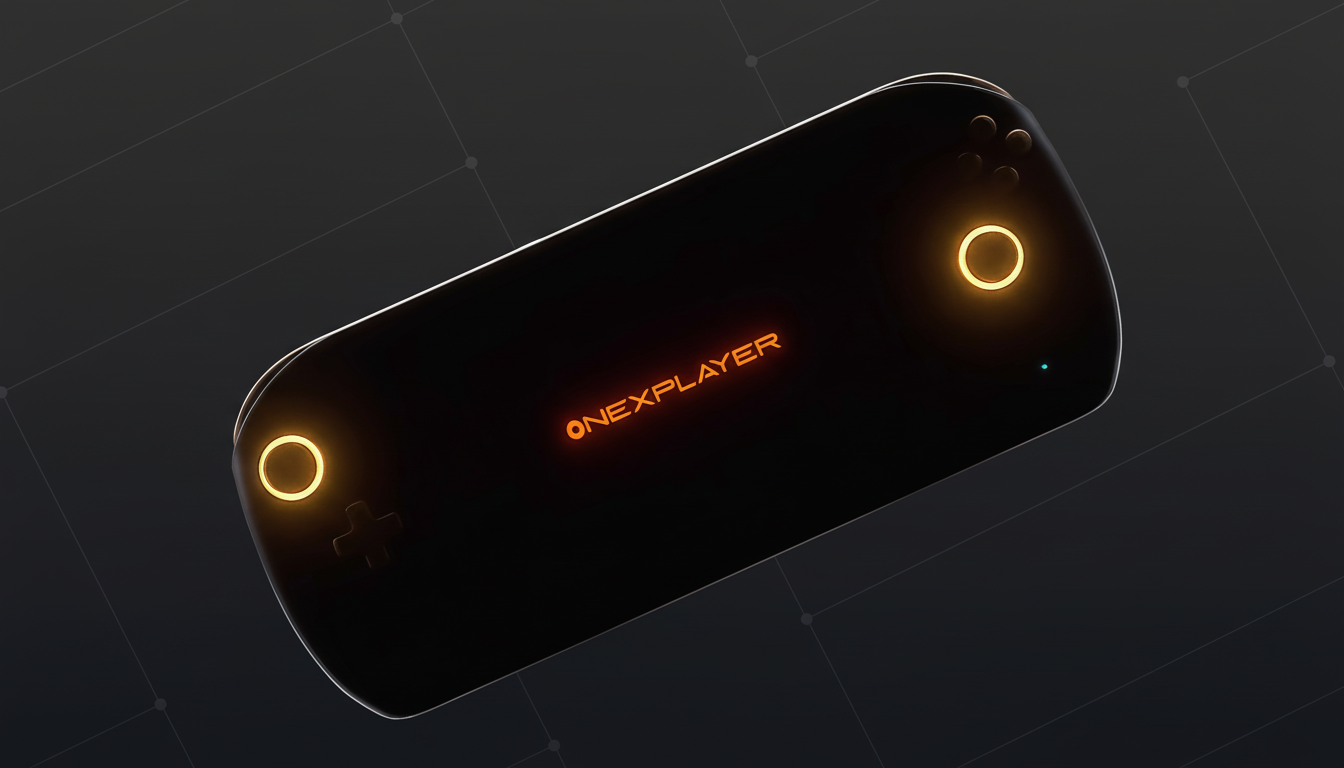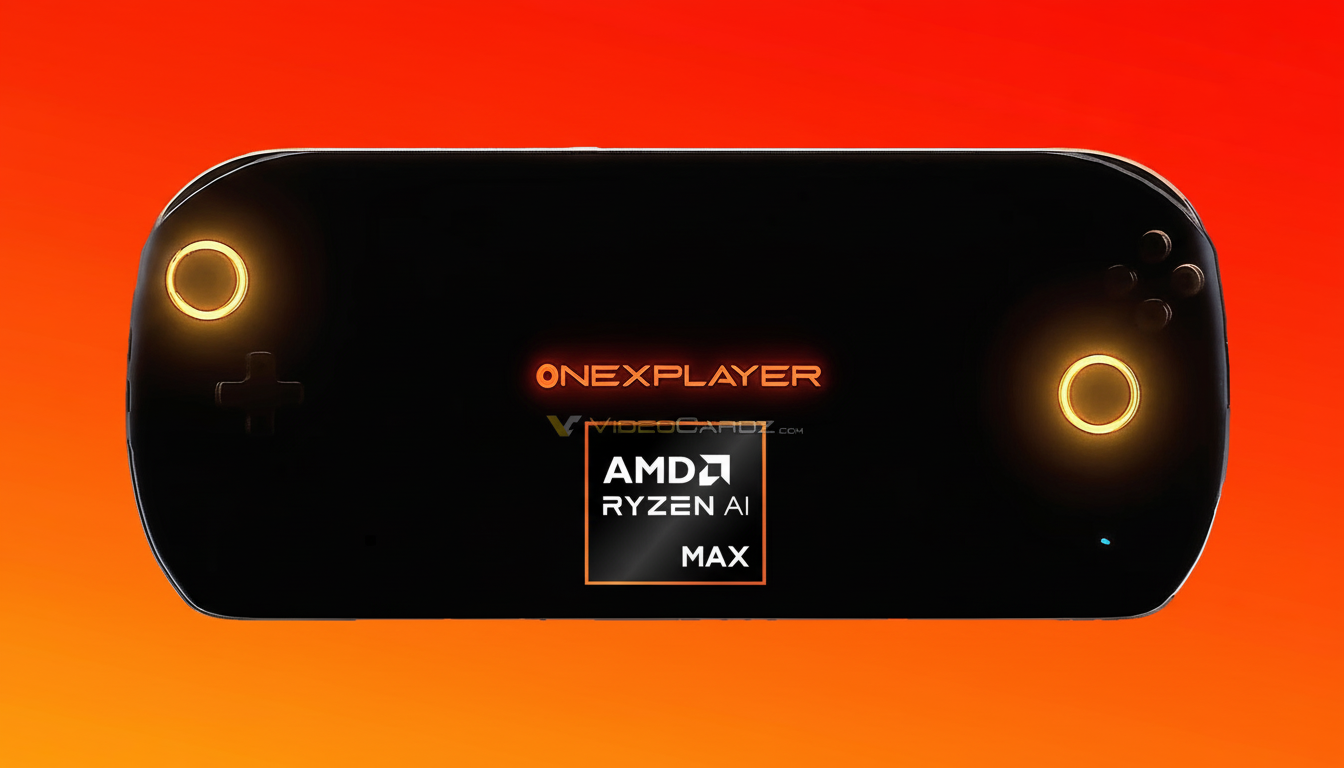The OneXPlayer Apex is shaping up to be the most audacious Windows gaming handheld so far, thanks to a high-refresh 8-inch panel, external 85Wh power pack, and top-tier AMD processor up front. It aims for a new sweet spot: desktop-class performance that you can carry around, without the heat, noise, and battery compromises of traditional handheld PCs troubled by underperforming Intel chips.
A new class of ‘ultra’ handheld gaming PCs emerges
But rather than cram everything into a tight body, the Apex is following the lead of devices like the GPD Win 5 with its emerging “ultra” blueprint: move weight and thermals off of the device, free up higher sustained power levels, and keep your handheld cooler and quieter.
- A new class of ‘ultra’ handheld gaming PCs emerges
- Bigger display with smarter weight and cooling balance
- Silicon choice and ambitious performance targets
- Memory capacity and storage headroom for power users
- Battery strategy and real-world playtime expectations
- Pricing expectations and the competitive outlook ahead
- What to watch next from One Netbook and Apex

That strategy is resonating with enthusiasts — GPD’s campaign has raised nearly $1 million in backing on Indiegogo — even though prices are far higher than their mass-market counterparts.
Traditional Windows handhelds like the ASUS ROG Ally and MSI’s early tries with the Claw hunted for console-like portability, yet hit power ceilings and thermals. The Apex hits back with a larger screen, higher TDP headroom, and modular battery and cooling implementation for lengthy periods at stable frame rates.
Bigger display with smarter weight and cooling balance
The Apex is based on an 8-inch, variable refresh rate, 120Hz panel — a significant leap over the dominance by first-gen gaming PCs with their 7-inch class screens.
VRR matters: it kills that perceived stutter at 40–60fps, where many hardcore AAA titles fall when running a handheld system. The screen spec seems in step with those used on the MSI Claw 8 AI+ and Lenovo’s Legion Go S — ditching OLED-grade contrast for punchy brightness and proven motion clarity at 120Hz.
To keep weight manageable, One Netbook balances bulk with an 85Wh external battery that’s presumably mounted to the rear, as well as “external liquid cooling.” If executed successfully, that combo should take some heat off the grips and weight, reduce fan ramp-ups, and extend playtime in comfort — something important for a large-screen handheld.
Silicon choice and ambitious performance targets
At its core is AMD’s Ryzen AI Max+ 395, similar silicon to the brains of current “ultra” handhelds. Marketing copy brags about “RTX 4070-class performance,” which is a bit of a stretch in raw rasterization, but the larger point remains: when you stop choking power and cooling, this APU can push serious frames. The Apex apparently can accept up to a 120W TDP envelope on paper — far above the 85W ceiling mentioned for some competitors, offering more burst and sustained load headroom.
That cedes them to lower-power, handheld realities. Expect optimised profiles in the 15–30W range to deliver 1080p or perhaps 800p gaming with FSR or dynamic resolution scaling rather than raw blurring and pixel count snatching at full HD, sitting within that magical 40–60fps band where VRR comes into its own. The AI acceleration capabilities of the chip are also uncovering emerging niche use-cases like running big local models; One Netbook today claims to be able to work with DeepSeek 70B — surely based on quantized and aggressive caching.

Memory capacity and storage headroom for power users
The Apex is expected to be able to support up to 128GB of memory, with iGPU allocation that seems unusually high (up to 96GB in shared “VRAM”) and should be welcome among the content creation and AI crowd next to the gamers. Storage is also ball-busting: Dual PCIe 4.0 SSDs, one full-size internal M.2 2280 and a second external Mini SSD slot. That external format is kind of like a faster, stronger version of SD Express, good for porting one’s PC game library between machines without committing to worse load times anymore.
Battery strategy and real-world playtime expectations
An 85Wh external pack alters the math. At a conservative gaming profile of 15–20W, that’s likely to be about 2–4 hours before you factor in the tablet screen and controller power draw. Crank it up to 30–40W for blockbusters and you would probably find yourself at around the 2-hour mark. Go even further in performance modes, and the machine will err on the side of wall power. The highlight here isn’t raw runtime, but being able to maintain higher clocks without hitting throttling temperatures while also keeping acoustics in check.
If this “external liquid cooling” module not only offloads heat more effectively than radiator-equipped fans but is quiet enough to shift Windows handhelds into a new noise floor entirely — with as little hesitation as we’ve seen on Chrome OS so far — that makes a difference in the living room and on commutes where a constant blower whine spoils the ride.
Pricing expectations and the competitive outlook ahead
Everything points to flagship pricing. The GPD Win 5 with a similar-tier chip costs at least around $1,700 on crowdfunding (USD), and the bigger display of the Apex along with its increased TDP headroom and modular battery design make it unlikely to drastically undercut that. Valve’s Deck OLED is the value play for a lot of potential buyers — if you’re here already, you probably don’t need anyone to tell you about it — but for Windows users who want access to the entirety of PC gaming, high-refresh displays, and total hardware power with no compromises… this fledgling “ultra” tier is where things are at.
What to watch next from One Netbook and Apex
An impending company livestream vows a deep dive into development, design, and thermals, as well as clarification on pricing and configurations.
Key stuff to look for:
- Sustained clocks and noise at fixed TDPs
- VRR range and color calibration
- Controller ergonomics
- Power draw with the battery module attached
The company has also teased a 2-in-1 gaming tablet, Sugar X, based on the same APU — an indication it’s going all in on this performance-first handheld architecture.
If One Netbook can eliminate the pain points of its cooling, acoustics, and power management — no mean feat — then the OneXPlayer Apex could be a reference design for this second wave of Windows handhelds: larger where it matters, smarter with thermals, and finally optimised around how people actually play.

